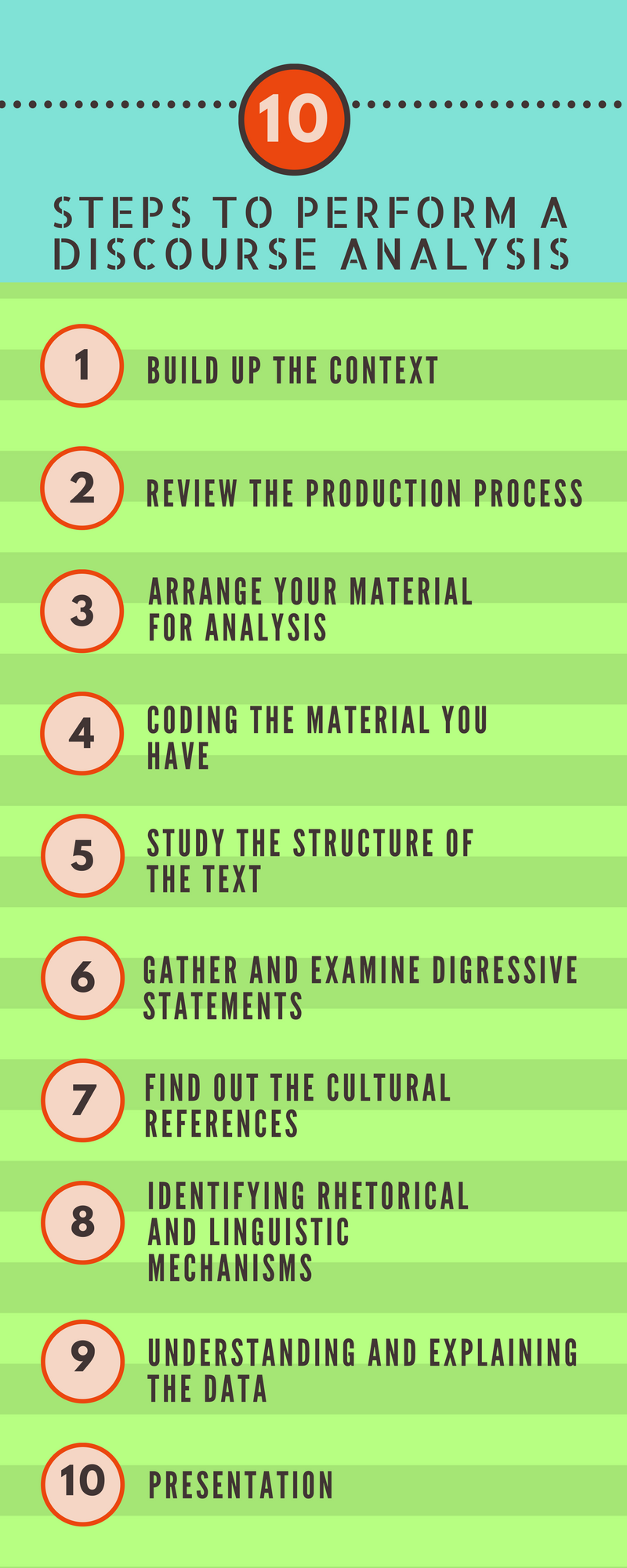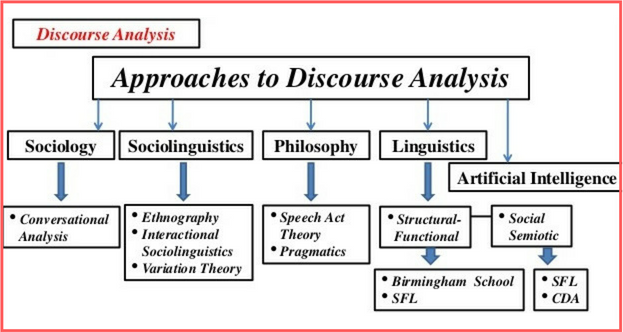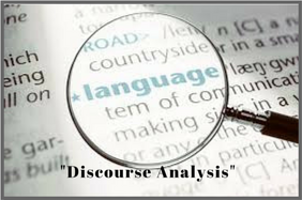Hey guys. In this article, I will talk about Discourse analysis. Discourse analysis has been looked upon in a variety of disciplines like in social sciences and humanities. It includes linguistics, cultural studies, human geography, etc. Each of these is subject to its own methodologies, dimensions of analysis, and assumptions.
This article will brief you on the following points:
- What is discourse analysis?
Below points are covered under brief introduction of Discourse analysis:
- Discourse meaning
- Disciplines in which discourse analysis is taken up
- Importance of studying discourse analysis
- Discourse analysis example
- Discourse analysis methodology
- Approaches in Discourse Analysis
So, let’s get started with knowing, what is discourse analysis?
1) Discourse Analysis Definition(DA)
Discourse Meaning
Before moving on to the whole process, let’s first start with the meaning of Discourse. The term “Discourse” denotes spoken and written language. It is a concept which depicts context of communication and interaction between each modality.
Discourse showcases “a body of series, of signs.” They are enouncements, i.e., statements, in a conversation. Discourse is a stable construct which allows the semiotic signs to assign different meanings. It also allows them to communicate to and between different subjects, objects, and statements.
A discourse is thus, a composition of semiotic series among and between different subjects, objects, and statements. There are interrelations amongst the content of a given discourse so, similarly, there exist interrelations amongst discourses.
The discourse within researchers, highlights the questions and answers of What is not? And What is? They are conducted according to the meanings of the concepts which are used in the given field of inquiry.
So, this was the meaning of discourse. Now, let’s see what discourse analysis is?
Discourse Analysis
Discourse analysis(DA), is also known as discourse studies. It is a general term used for some approaches to analyze vocal, written or sign language use or any semiotic event.
All these are objects of discourse analysis like writing, and communication are defined concerning rational sequences. These sequences include courses of speech, sentences, prepositions or turns at talk.
In discourse analysis, you not only study the use of language but, you also analyze ‘naturally occurring’ language use. It aims at showcasing socio-psychological characteristics of a person rather than its text structure.
Following are the disciplines under humanities & Social sciences, in which discourse analysis is taken up:
- Linguistics, anthropology, sociology
- Education, social work, social psychology
- Cognitive psychology, area studies, international relations
- Area studies, cultural studies, human geography
- Biblical studies, communication studies and translation studies.
Each of these is subject to its own methodologies, dimensions of analysis, and assumptions.
Following things are covered under Discourse Analysis:
- Genres of discourse like discourse in the media, politics, business, science, education, etc.
- Different dimensions or levels of discourse like sounds, syntax, style, meanings, turns, speech acts, moves, etc.
- The connection between discourse and the emergence of syntactic structure.
- Relationship of discourse and power.
- The relation between text and context.
- Relationship between discourse and interaction.
- The relations among discourse and memory and cognition.
Importance of studying Discourse Analysis
-
- If you are a linguist, then it helps you to find out the functioning of language.
- Being an educator, it will help you in finding out that how good texts work. It will help you in educating your students better about writing or speaking strategies.
- If you are a critical analyst, then it helps you to discover meanings in the text those are not obvious on the surface. For example, if you analyzing someone’s speech to see their preconceptions.
Discourse analysis example
-
-
- Language which is above the clause or the sentence. Example: One day his father said to him, “Come, Sam, take this fruit basket and bring them to your grandfather.”
- Discourse in social practice. Example: Discourse of peace, medical discourses, discourses of food, etc.
-
2) Discourse Analysis Methodology

Following are the ten steps to perform a Discourse analysis:
i. Build up the Context
Start by checking that, where your source material is from? Check that, in what context the source is produced? Jot down its historical and social context. Write down the language in which your source material is written.
Then there is a lot to find out like the country and place where your source is from and who wrote, published it and when? Try to maintain the record of your sources like, when and why you used the sources. It is essential for you to find out the history of your source material.
ii. Review the production process.
There is a requirement of an in-depth background check. Try to find information about the producer of your source and their personal and educational background. You need to have a broader range of research. Search, are they known for their journalism style or any other such thing?
Find out, who the general audience is of their publications. If you can, then go for a personal interview with the editor of that magazine. With this, you will get some close information regarding the production backgrounds.
Now, you need to identify that where your source material has been published. Reading it online is not that useful. It is not the same as, reading directly from a book. Try to make sure that, you have identified all the media types on which your source was published. Try to be clear about the version, which you are analyzing yourself.
It will also reveal the quality of the source material which you have. You should also keep in check the technical quality and readability of your source. All these background checks will help you later during the further stages of the analyses.
iii. Arrange your material for analysis
To analyze the actual text, it is preferable to arrange and prepare everything that allows you to work with ease. If you have a hard copy, then make copies of it and then start marking down essential features.
You can also do it digitally by arranging a digital copy. You can then add references which others can use who will follow your work.
iv. Coding the material you have
Coding is merely an academic version of online tagging process. When you have to code data, that means you are distributing attributes to particular units of analysis. It includes sentences, paragraphs or single words.
To start coding, you first need to bring out your coding categories. The first step is to theoretically outline such types based on the kind of question in your mind. Because of this, you will be able to develop few themes in mind which you expect to find.
An in-depth review of the secondary literature on your topic will outcast inspiration. Now, you need to write down the topics which will relate to these key themes.
You might need to break the categories into sub-categories. There are various ways to code in which you can quickly highlight text sections in different colours or jot down specific parts, etc.
v. Study the structure of the text
There are many questions which get raised when we talk about examining the structure of the text. Are there ways where different discourse strands overlap each other in the text? Are there sections which deal with one discourse? Can you identify that, how the argument is structured?
You need to analyze all these things. Consider the headers and the other layout features. The most important thing is to check the overall role of the introduction and conclusion.
vi. Gather and Examine digressive statements
Till now, you know all the features of your text. It’s time to work bigger and reach on the individual statements which are also called discourse fragments.
The best way to do this is to collect all the statements with particular codes and then examine that, what they have to say. It will help you to find out what “Truths” the text is establishing on each major topic.
vii. Find out the cultural references
Now you need to think about that, how the context responds to the argument. Find out, whether your material contains references to other sources? What meaning does the text assign to other sources? Answers to these questions will help you figure out the proper functioning of the intertextuality.
viii. Identifying rhetorical and linguistic mechanisms
This step will take most of your time, but it’s satisfying too as you will come to know the detail working of discourse. You will need to find out that how various statements function at the language level.
Following are some of the things you should look out for:
Word groups, Rhetorical and literary figures, Grammar features, Modalities, Direct and indirect speech and Evidentiality.
ix. Understanding and explaining the data
Now that you have collected all the elements of your analysis, the next step is to understand what it means. You need to tie all the results together and then explain them.
It also means that you need to understand and then explain that what the discourse is about and how does it work? It requires your knowledge of individual statements and structural features. You need to place the findings into the broader context.
You need to keep in mind the following questions: Who created your analysis material? What is their position according to the topic which you are examining? Most important is that, who is benefiting from the discourse that your source materials construct?
x. Presentation
Now you have the answer to your initial question. It’s time to get your results in front of your target audience. If you have analyzed as per the steps, you now have many notes from which you can quickly build your thesis or presentation paper.
You need to present a relevant data to your audience which is related to the raised issue. Try not to make it much theoretical and instead you can add examples to illustrate things. After doing all this, you are good to go.
3) Approaches to Discourse Analysis

There are mainly three approaches to discourse analysis. Following are the main approaches with their descriptions:
Speech Act Theory
It focuses on communicative acts that are performed using speech. The speech act theory applies to discourse analysis. It helps you by providing a framework.
With this, you can identify the conditions which are underlying the productions. You are also able to understand an utterance which is a kind of linguistically realized action.
Ethnography of communication
It is an approach to discourse, based on anthropology and linguistics. This approach tries to study patterns of communicative practices. Such practices are a central part of what one does and knows as a member of a specific culture.
Pragmatics
It is a study of the use of context to build inferences about meaning. It is another broad approach to discourse analysis. These days, pragmatics has a broader discussion range.
Conclusion
So, guys, this article was about Discourse analysis. It is a study of how the language used in communication assume purpose, meaning, and unity for their users. I hope you liked this article and if you did, then do let me know through your comments below and do subscribe to my Blog to read such informative articles.
Also, for any query regarding this article or for any online assignment help, you can email us on the id given on our website. We would love to help you. Thank you for reading. 🙂
